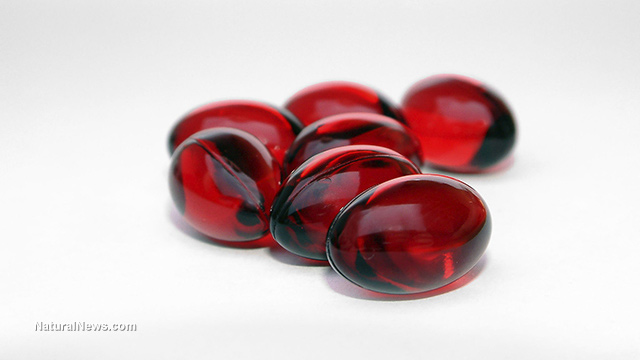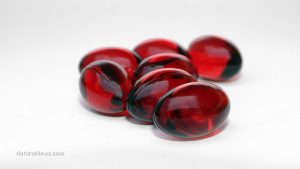
Astaxanthin sources, health benefits and uses
Monday, September 11, 2017 by Frances Bloomfield
http://www.naturalpedia.com/astaxanthin-sources-health-benefits-and-uses.html

Astaxanthin is a naturally-occurring carotenoid pigment responsible for the signature colors of red-hued aquatic animals, most famously that of salmon; these various organisms in turn derive asaxanthin from microalgae. These single-celled creatures are the primary sources of astaxanthin, with Haematococcus pluvialis being the type that produces and accumulates the highest levels astaxanthin. Unfavorable conditions will prompt Haematococcus pluvialis to produce high amounts of this carotenoid, hence why it has potent antioxidant qualities.
The antioxidant properties of astaxanthin are such that it’s stronger than other well-known antioxidants like vitamin E, lycopene, and lutein. Moreover, astaxanthin can protect cells from the inside and outside thanks to its unique structure. Unlike other antioxidants, astaxanthin does not become pro-oxidant or unsafe during the digestive process.
Eating a good and frequent supply of wild-caught salmon is the best way to obtain astaxanthin. While astaxanthin supplements are readily available, it’s not recommended as many of these astaxanthin supplements are synthetic and will often contain harmful chemicals.

Medicinal uses for astaxanthin
By increasing high-density lipoprotein (HDL) cholesterol while also minimizing low-density (LDL) cholesterol, astaxanthin decreases the risk of cardiovascular diseases. Astaxanthin provides further protection from heart conditions by suppressing the oxidation of lipids in the blood vessels, as well as delaying and reducing blood clotting.
In addition, astaxanthin can modulate nitric oxide and help the blood vessels relax, thereby helping reduce the chances of becoming prone to high blood pressure.
Astaxanthin possesses anti-inflammatory and pain relieving attributes that make it highly effective in providing relief from all manner of health conditions that would usually arise from inflammation. These include rheumatoid arthritis, osteoarthritis, and dysmenorrhea.
The anti-inflammatory property of astaxanthin even extends to sunburn, which is considered to be a type of inflammation. Astaxanthin provides the added benefit curbing the damage that could be caused by UVA rays, essentially making astaxanthin a natural sunblock.
Moreover, astaxanthin’s anti-inflammatory qualities can help defend the liver against non-alcoholic fatty liver disease, as can this carotenoid’s ability to improve insulin sensitivity.
Astaxanthin can be used as an exercise supplement since it’s been observed as promoting the body’s use of fatty acids, an action that can increase one’s endurance and ensure that muscular and skeletal damage doesn’t occur.
One unusual yet important health benefit of astaxanthin is its ability to aid male fertility. Astaxanthin can greatly improve sperm count and motility.
Body systems supported by astaxanthin
In addition to acting like sunblock, astaxanthin can smooth out wrinkled and shrink age spots. These benefits were observed in oral doses and topical applications of astaxanthin.
Astaxanthin can benefit the heart and muscles too, particularly when taken regularly.
Where to learn more
- Astaxanthin is Age and Disease Defying Miracle Nutrient from Microalgae
- Astaxanthin one of the most neuroprotective supplements yet discovered; fat-soluble carotenoids protect the nervous system, brain and eyes
- Astaxanthin prevents heart disease, diabetes and Alzheimer’s dementia
- Astaxanthin: The Little-Known Miracle Nutrient for Inflammation, Anti-Aging, Athletic Endurance and More
- Astaxanthin: The Miracle Antioxidant and Anti-Inflammatory Nutrient
Summary
The carotenoid pigment astaxanthin has multiple health benefits that come with regular intake. Astaxanthin can prevent or alleviate the symptoms of inflammatory conditions, exercise fatigue, and cardiovascular diseases, and can even boost male fertility. It can support the skin, heart, and muscles.
Sources include:
Tagged Under: Tags: astaxanthin





